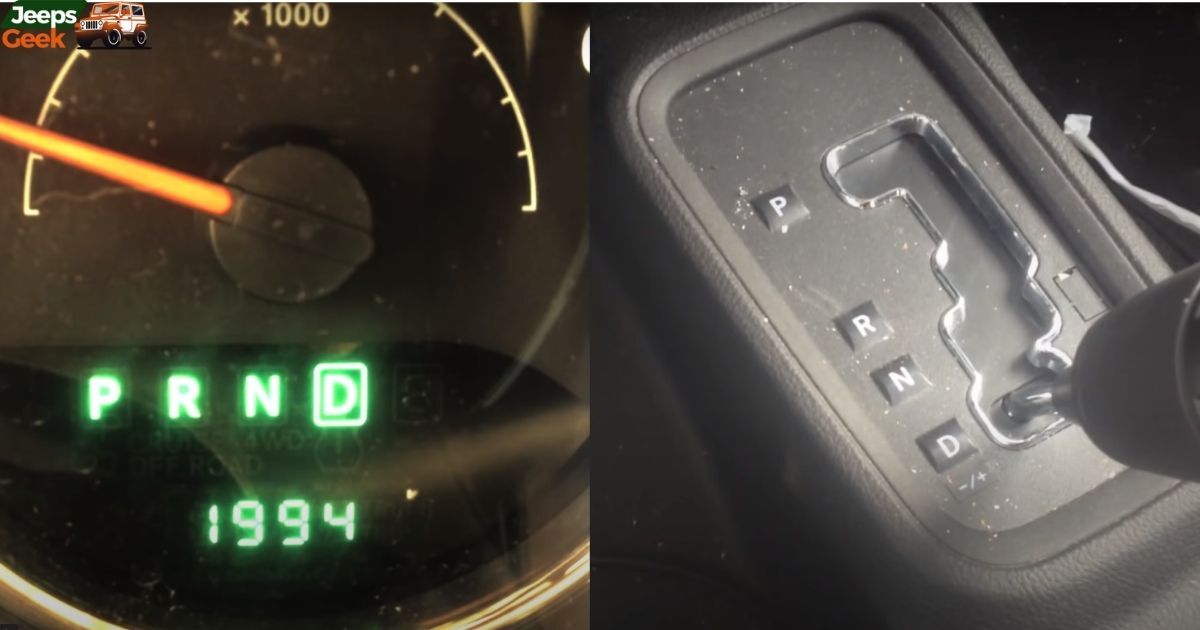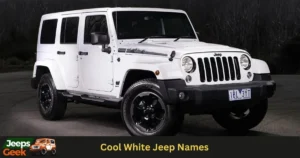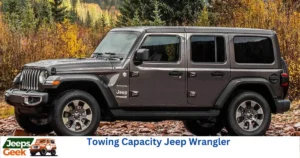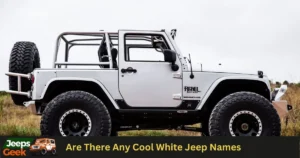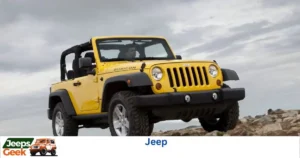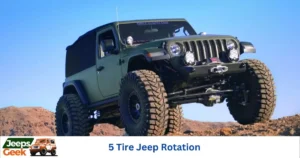Fixing Jeep Wrangler automatic transmission shifting problems means solving issues that can make the gears change roughly. This includes checking the transmission fluid, making sure the clutch parts are okay, and fixing any problems with shift cables or the torque converter.
Regular checks and quick action help keep the automatic transmission working smoothly. If things still don’t feel right, it’s a good idea to ask a mechanic for help. They can figure out the problem and make things run better.
The Jeep Wrangler is a really fun car to drive, perfect for daily use or exciting off-road trips. But, unfortunately, some people face issues with the automatic transmission in the Jeep Wrangler that take away the fun.
Many Jeep drivers experience problems with the transmission, like slipping gears, overdrive troubles, delays in shifting, and unexpected shifts to neutral. These serious issues can make your car not work properly and might result in expensive repairs.
However, it’s essential to know that some of these problems have simple fixes, and all of them can be solved. Understanding the common problems, their signs, and how to accurately identify your specific issue can be very helpful when you encounter any transmission-shifting problem.
Let’s take a closer look at the automatic transmission shifting problems in Jeep Wranglers to explore the common issues, likely causes, and potential solutions.
Jeep Wrangler Automatic Transmission
The Jeep Wrangler, known for its rugged off-road capabilities and iconic design, comes equipped with an automatic transmission for a smoother driving experience.
However, like any vehicle, Jeeps can encounter automatic transmission shifting problems that may affect performance and reliability.
An automatic transmission can shift gears by itself as the car goes faster or slower. It uses different systems, like a torque converter, a fluid coupling device, or a dual-clutch system to move power from the engine to the transmission and then to the wheels.
The Jeep Wrangler’s transmission has changed a lot over the years. From 1986 to 2006, they had a 3-speed automatic transmission with a few changes. These transmissions didn’t have an overdrive gear, were light, and were simple to use.
In 2003, some models got a 4-speed RLE transmission, which was the preferred automatic transmission until 2012. After that, they introduced the 5-speed W5A580.
Read also: Stop Start Not Ready Cabin Cooling Or Heating: 8 Tips To Fix The Error?
Why do Jeeps have transmission shifting problems?
Understanding why transmission issues occur is the first step in finding a solution. Several factors contribute to shifting problems in Jeep Wranglers, ranging from mechanical issues to wear and tear over time.
Jeeps, like any other car, can have problems with shifting gears in the transmission. There are different reasons why this might happen, including:
- Wear and tear: Over time, parts inside the transmission, like clutch plates, bands, or gears, can get worn out.
- Fluid Issues: Transmission fluid helps cool and lubricate the transmission parts. If the fluid is low, dirty, or not in good condition, it can affect how the transmission works, causing problems with shifting gears.
- Solenoid Malfunction: Automatic transmissions use solenoids to control fluid flow and engage specific gears. If a solenoid is not working correctly, it can lead to issues like erratic shifting and hesitation.
- Electronic Sensor Problems: Automatic transmissions rely on sensors to monitor things like vehicle speed and throttle position. If a sensor is not working right or giving the wrong information, it can cause problems with shifting.
- Software or Calibration Issues: The car’s computer controls the transmission using pre-programmed instructions. If there are mistakes in the software or calibration, it can affect how the transmission shifts.
- Manufacturing Defects: Sometimes, there can be mistakes in making specific parts of the transmission, causing shifting problems.
It’s important to know that not all Jeeps or Jeep models have issues with shifting gears, and the problems can be different for each vehicle.
Common Automatic Transmission Shifting Problems of the Jeep Wrangler:
The Jeep Wrangler isn’t perfect, and over time, it has developed several issues. One common problem that many Wrangler drivers encounter is related to the transmission.
Automatic transmission problems can vary, and some are easy to fix while others are more challenging. However, it’s crucial to identify the specific issue to address it properly.
Some known problems include delayed or failed gear shifting, issues with gear engagement, slips or erratic shifting, random shifts to neutral, problems with the torque converter or overdrive, and leaking seals.
Each of these problems has different causes, symptoms, and repair costs. Let’s discuss these problems to make it easier for you to troubleshoot and find solutions.
Delayed/Failed Gear Shifting

Having trouble shifting gears in your Jeep Wrangler’s automatic transmission is a common issue. It can be quite annoying, especially when you’re off-roading. This problem is more noticeable in 42RE and 42RLE 4-speed transmissions.
It usually happens in certain situations, like when you’re shifting from first to third gear or from third to fourth gear. Sometimes, you might think it’s a one-time thing or that it’s because of your driving style.
Plus, the check engine light doesn’t come on, making it tricky to figure out what’s causing the problem because there doesn’t seem to be an urgent need to check it.
The causes behind this issue are:
- Low transmission fluid levels
- Worn-out clutch components
- Faulty solenoids
Addressing these causes promptly is crucial to preventing further damage to the transmission system.
- If the transmission fluid is low or dirty, it can cause problems. To fix this, add more fluid if it’s low or change it if it smells burnt.
- If the pressure solenoid is blocked or damaged, the transmission may not have enough fluid pressure to shift between the 1st and 3rd gears.
- When the bands inside the transmission are worn out, it can mess up the shifting, causing it to be rough or slip. This can lead to erratic shifting and harsh movements.
- If the sensors or wiring in the transmission are not working correctly, it can make shifting slow or not happen at all. Finding and fixing the issue can help with this problem.
- When the overdrive solenoid doesn’t work, there can be issues with the fourth gear, causing delays or failures in shifting. Fixing or replacing the solenoid can solve this problem.
Delayed/Failed Gear Engagement
Sometimes, Jeep Wrangler drivers experience a delay when trying to put the car in gear, or it might not engage at all. This happens in various Wrangler models, but it’s more common in Jeeps with the 545RFE 5-speed automatic transmission. Usually, the check engine light comes on when this problem occurs, especially in colder weather. But even if the light doesn’t come on, you can still notice the issue, especially in cold conditions.
The causes behind this issue are:
- Malfunctioning shift cables
- Issues with the torque converter
- Transmission fluid contamination
- Regular maintenance can help prevent these problems, ensuring smooth gear engagement.
This problem happens because:
- Transmission fluid might leak from the torque converter because of a filter that’s leaking. Even if you turn off the car, the fluid keeps coming out. So, when you start the car again, there’s not enough pressure for the transmission to work right, causing problems with the gears.
- If your transmission fluid is old or dirty, this issue can happen. Check the fluid’s condition if you haven’t changed it recently.
- Using the wrong transmission fluid or not having enough of it can also cause this problem.
Gear Slips/Erratic Shifting
Many Jeep Wrangler drivers often have a problem called “slipping gears.” This means the gears in the car don’t work smoothly, and the shifting can be unpredictable and erratic. This issue tends to get worse over time.
The A6MF1 6-speed automatic transmissions in Jeep Wranglers are more likely to have this problem compared to other models.
If you have a Jeep Wrangler with the A6MF1 transmission, you might notice more issues with slipping gears when it’s cold outside.
When Jeep Wranglers have this problem, a check engine light may come on, but not always. So, even if your car doesn’t show a warning light, there could still be an issue.
The causes behind this issue are:
- Worn-out transmission bands
- Faulty sensors
- Transmission fluid issues
- Proactive inspection and timely repairs are essential to maintaining consistent gear shifting.
Sometimes, the way your car shifts gears can be all over the place, and the gears might slip. This happens when the solenoids, which are like tiny switchers in your car, have problems.
If they get damaged or don’t work right, they might leak fluid or get stuck in one position, causing shifting issues. You might need to replace them if they’re too damaged, but sometimes you can just fix them by putting them back in the right way.
Also, if the wiring that connects to these solenoids is broken or not working well, it can mess up the signals your car gets. You can solve this by fixing or changing the wiring.
Random Shifts to Neutral
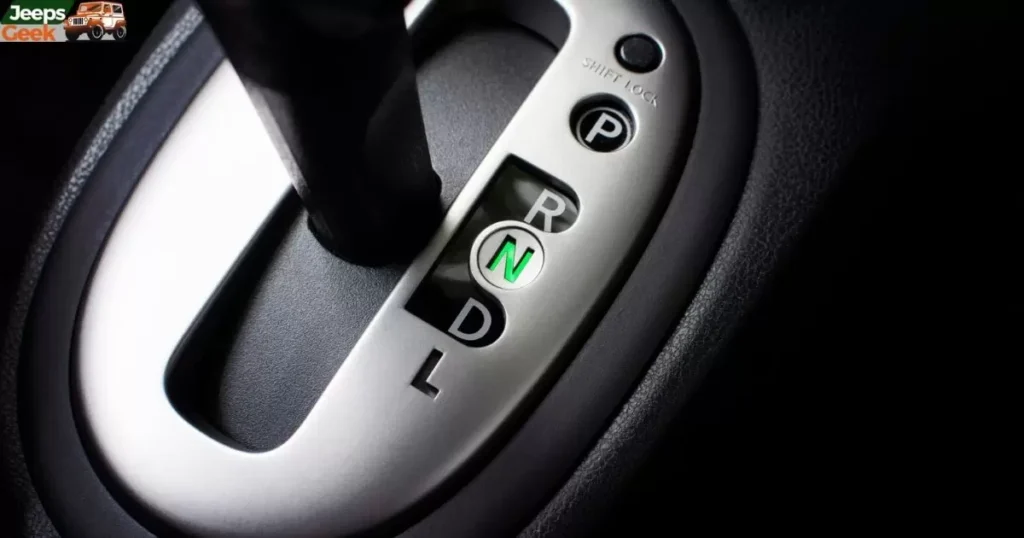
If you’re driving a Jeep Wrangler with front-wheel drive and a ZF9HP48 9-speed automatic transmission, you might have noticed your Jeep unexpectedly shifting to neutral.
This happens randomly, and it doesn’t seem connected to how you’re driving or any other conditions.
When this issue occurs, a check engine light usually comes on, and the error codes related to it are usually saved in the ECU (the car’s computer). If you’re facing this problem, it’s quite common, and there’s even a service bulletin about it.
You might want to check the service bulletin to see if it helps solve the issue since many others have experienced the same thing.
The cause behind this issue is:
- Faulty transmission control module
- Electronic glitches
- Wiring problems
- Diagnostic checks and software updates may be necessary to resolve these unexpected shifts.
If the plug or wires of the transaxle range sensor get broken or don’t work right, the sensor sends the wrong messages. When the TCU (Transmission Control Unit) notices these wrong messages, it switches the driving mode to neutral and shows the P0901 code.
Torque Converter/Overdrive Issues
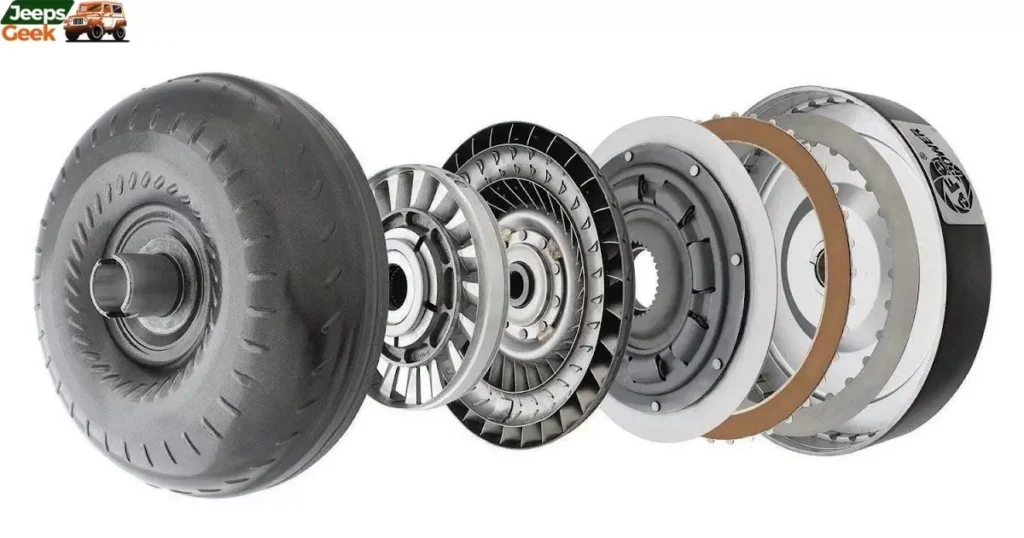
Some Jeeps with a 42RE / 42RLE transmission can have a problem with overdrive. Overdrive is like the highest gear in the car that helps save fuel when driving fast.
When there’s an issue with the torque converter, it makes the transmission not work well. You might feel the gears slipping, the car shaking sometimes, or a shuddering feeling.
This torque converter or overdrive problem happens unexpectedly, and it might turn on the check engine light. When this happens, the car stores error codes in its memory.
You can use an OBD scanner to check these codes and figure out what’s wrong more easily.
The causes behind this issue are:
- Overheating of the transmission
- Damaged torque converter
- Insufficient transmission fluid
- Cooling system maintenance and regular fluid checks can help prevent these problems.
A JA cover plate typically holds the pressure boost valve. If it gets damaged, it can also harm the retaining bracket. When this bracket can’t hold the lockup pump properly, it triggers a P1740 code. To fix this issue, you can replace the entire setup with an upgraded kit.
If the input/output speed sensors, throttle position sensors, governor pressure solenoid, or their corresponding sensors are not working correctly, they may send the wrong readings. This can lead to problems with the torque converter clutch.
If this happens, you might see different error codes related to speed sensors. The solution is to replace these sensors to resolve the problem.
Leaking Seals Problem
If you see oil dripping from your Jeep Wrangler, that’s a problem. But if your Jeep takes its time to shift gears or the check engine light comes on, it might be the same issue.
The causes behind this issue are:
- Deteriorated transmission seals
- Impact damage
- Improper installation
- Promptly fixing leaks and replacing damaged seals is vital to prevent fluid loss and subsequent transmission damage.
A cracked transmission pan can cause fluid to leak out. Since it’s under the engine, things might hit it and make dents when driving on bumpy roads, causing liquids to leak. If the torque connectors are damaged or rusted, they can also cause fluids to leak.
If the transmission seal faces too much pressure or rubbing, it might not be able to stop the transmission fluid from leaking.
How Do You Fix Jeep Wrangler Automatic Transmission Shifting Problems?
Addressing Jeep Wrangler automatic transmission shifting problems involves specific methods for each issue:
Transmission problems have various causes, so fixing them can be different. That means the solutions and how much it costs to fix them are also not the same.
Delayed/ Failed gear shifting
To fix delayed or failed gear shifting, check and replenish the transmission fluid, inspect the clutch components, and replace any faulty solenoids.
Reconnect Wire
If the wires are disconnected, connect them again.
Fill Up Fluids
If the transmission fluid is low, add more.
Clean Filter
If the transmission filter is dirty, clean it with the right fluid. If it can’t be cleaned, replace it.
Repair or Replace Solenoid
If the solenoid is leaking or sticking, fix or replace it.
Fixing wires and adding fluid won’t be too expensive. The cost depends on your choice of fluid and the technician you choose.
The transmission filter might cost you $1399, and don’t forget to add the labor cost. Also, the solenoid can range between $186 and $207.
Delayed/Failed Gear Engagement
Fix delayed or failed gear engagement by examining and potentially replacing malfunctioning shift cables, addressing torque converter issues, and ensuring clean transmission fluid.
- Right Fluid: Make sure to use enough of the right fluid when you fill up.
- Warm Up the Engine: If it’s cold outside, wait a bit after starting your car to let the engine warm up.
- Change the Filter: If the cooler filter isn’t working, replace it. The cost of a new cooler filter can be between $80 and $160.
Gear Slips/Erratic Shifting problems
Resolve gear slips or erratic shifting by inspecting and replacing worn-out transmission bands, addressing faulty sensors, and maintaining proper transmission fluid levels.
Check and change solenoids: Look at the solenoids inside the transmission. If any are broken or not working right, replace them. The check might cost between $50 and $150. Typically, one solenoid could be between $50 and $200.
Unexpected Shifts to Neutral
For unexpected shifts to neutral, diagnose and fix issues with the transmission control module, check for electronic glitches, and ensure the wiring is in good condition.
Fix or Change the Connector: If only the transaxle range sensor connector is damaged, you might fix it. Depending on how bad it is, you can try connecting loose wires, straightening bent pins, or cleaning off any rust.
Be careful, and make sure the fix is strong. If that doesn’t work, get a new one. The whole cost of fixing or changing the damaged transaxle range sensor connector can be between $50 and $200, including the cost of work.
Torque Converter/Overdrive Issues
To tackle torque converter or overdrive problems, maintain the cooling system, address any damage to the torque converter, and ensure an adequate supply of transmission fluid.
Replace the Sensor: If there’s a problem, change the broken speed sensor in the transmission. This will make sure the torque converter clutch connects properly. The sensor can cost anywhere from $16 to $64.
Leaking Seals Problem
Fix leaking seals by replacing deteriorated transmission seals, addressing any impact damage, and ensuring proper installation of new seals.
- Fix Seals: If the seals can be repaired easily, go ahead and fix them. If not, it’s better to get a new set of seals.
- Fix Transmission Pan: If the transmission pan is damaged, try fixing it. If it can’t be fixed, you’ll need to buy a new one.
- Torque Connector Repair or Replace: If the torque connector is damaged, try repairing it. If it can’t be fixed, consider replacing it.
The transmission pan usually costs between $73 and $100, the seal costs between $132 and $158, and the torque connector is priced between $1200 and $1400.
Pros and Cons of Addressing Jeep Wrangler Automatic Transmission Shifting Problems
| Pros | Cons |
| Improved Driving Experience | Cost of Repairs |
| Prevent Further Damage | Diagnostics Challenges |
| Enhanced Safety | Downtime During Repairs |
| Longer Transmission Lifespan | Potential for Future Issues |
Balancing the pros and cons of addressing Jeep Wrangler automatic transmission shifting
Problems help owners make informed decisions, considering both the immediate benefits and potential challenges involved in the repair process.
Future Directions for Resolving Jeep Wrangler Automatic Transmission Shifting Issues
Looking ahead, fixing issues with Jeep Wrangler automatic transmission shifts is getting better. Soon, we might see smarter ways to figure out and solve these problems.
They’re working on making the parts stronger too, so your Jeep runs better and you don’t have to worry about shifting troubles.
In the future, it could be even simpler for you to adjust how your transmission works. They might make it so your Jeep can fix itself with updates, so you don’t have to do much. Overall, they’re trying to make your Jeep’s transmission work smoothly and last a long time.
FAQs
Why is my automatic transmission having trouble shifting?
Automatic transmission issues can arise due to various reasons, such as low transmission fluid levels, a malfunctioning transmission control module, a worn-out torque converter, or problems with the solenoids. It’s essential to diagnose the specific cause, and common solutions include checking and replenishing the transmission fluid, addressing electronic control module issues, or replacing faulty components.
Do Jeep Wranglers have transmission issues?
While Jeep Wranglers are reliable vehicles, like any other car, they can experience transmission issues. Common problems may include delayed or rough shifting, gear slippage, or failures in gear engagement. Regular maintenance and addressing issues promptly can help prevent and mitigate transmission problems in Jeep Wranglers.
Why is my Jeep not shifting gears?
A Jeep not shifting gears could be due to several factors, including low transmission fluid, a faulty shift solenoid, issues with the torque converter, or a malfunctioning transmission control module. Identifying the specific cause through diagnostic checks is crucial. Solutions may involve checking and replenishing the transmission fluid, replacing faulty solenoids, or addressing electronic control module problems.
What causes a transmission to shift too soon?
Problems with the governor or modulator valve, low transmission fluid, or a malfunctioning throttle position sensor can all contribute to a transmission shifting too soon. In some cases, it may be a result of incorrect adjustments or settings. Diagnosing and addressing these issues can involve checking and adjusting fluid levels, replacing sensors, or adjusting the transmission control settings.
Final Words
Jeep Wrangler owners can enjoy a reliable and smooth driving experience by staying vigilant about automatic transmission shifting issues. Regular maintenance, timely inspections, and swift action to address problems are key to keeping your Jeep’s automatic transmission in top-notch condition.
If you ever encounter shifting problems, consulting with a qualified mechanic is advisable to ensure a proper diagnosis and effective resolution. Keeping your Jeep well-maintained guarantees countless more adventures on and off the road.
The Jeep Wrangler is a great car that can go on any road. But sometimes, automatic transmission issues can spoil the fun. Don’t stress about these problems, no matter how tough they may seem.
Like any other part of your car, catching transmission problems early can save you money and stop bigger issues. That’s why it’s important to know how to notice the signs of transmission trouble and what to do if you see any problems. Just take your time to figure out the issues and find the solution.

Nicholas Clark at your service, blazing trails with “Jeeps Geek.” As a Jeep aficionado, I’m here to share my passion, troubleshoot any roadblocks, and guide you through the exhilarating world of Jeeps. Let’s hit the trails and make every Jeep adventure unforgettable.
